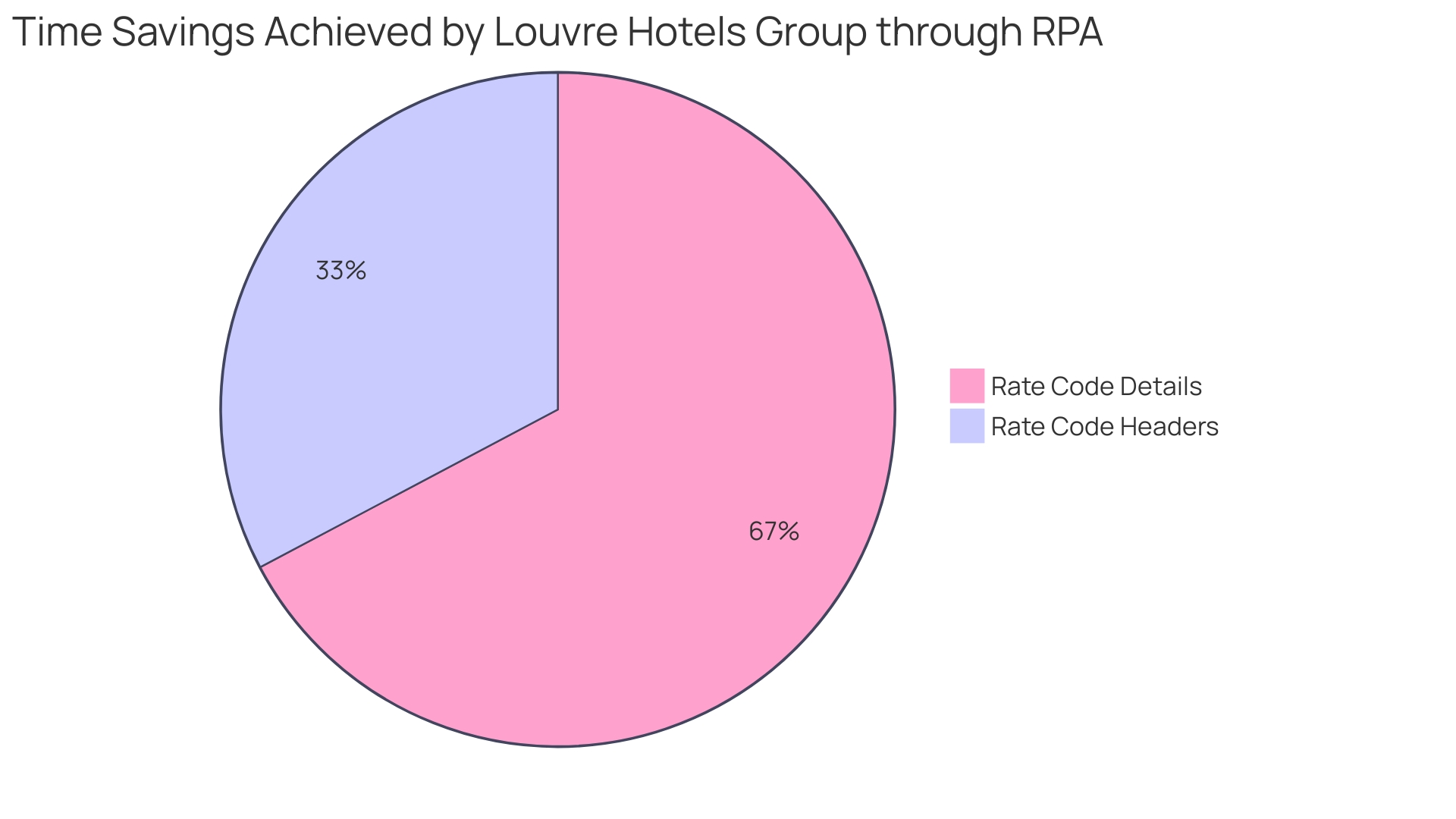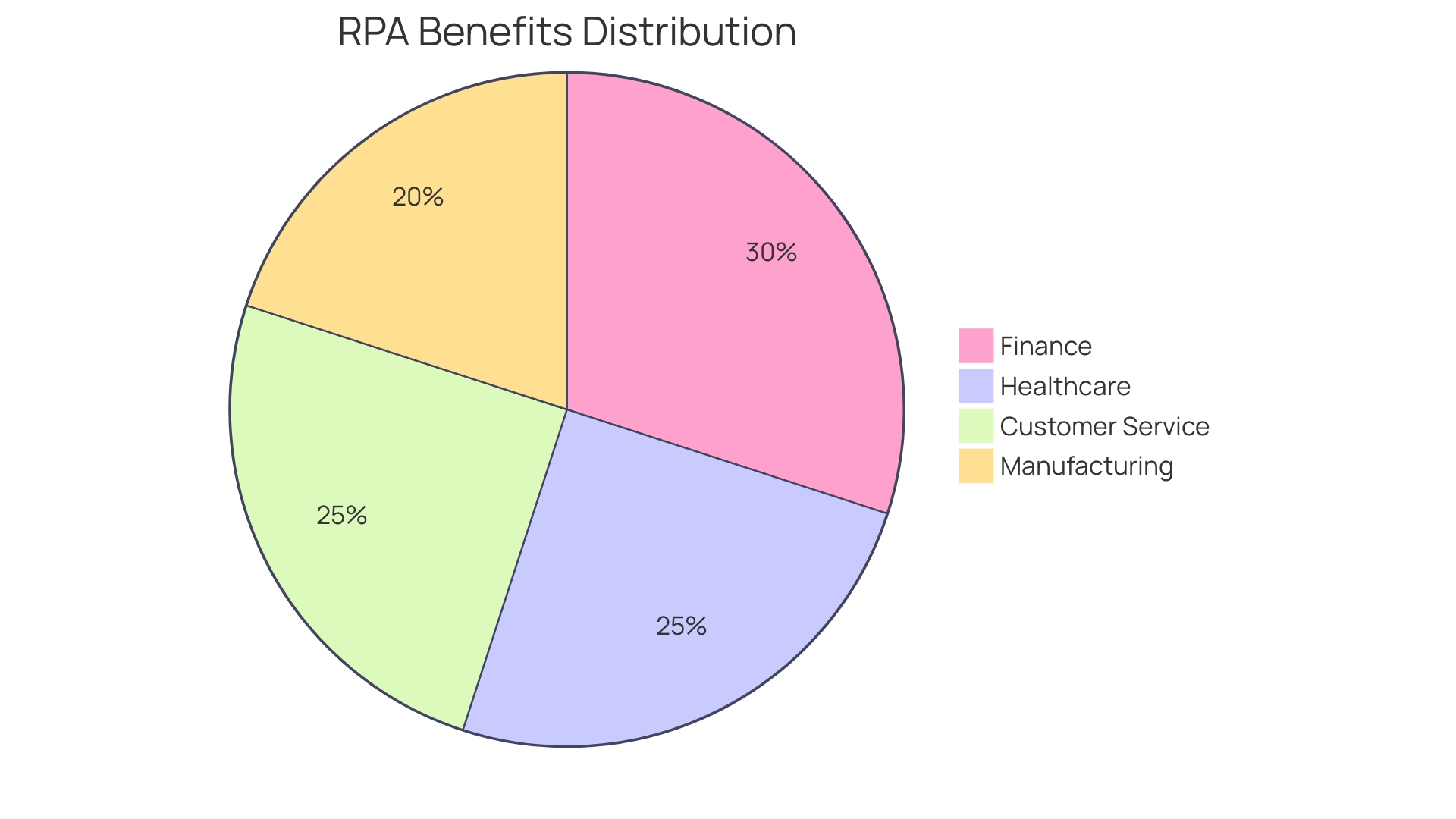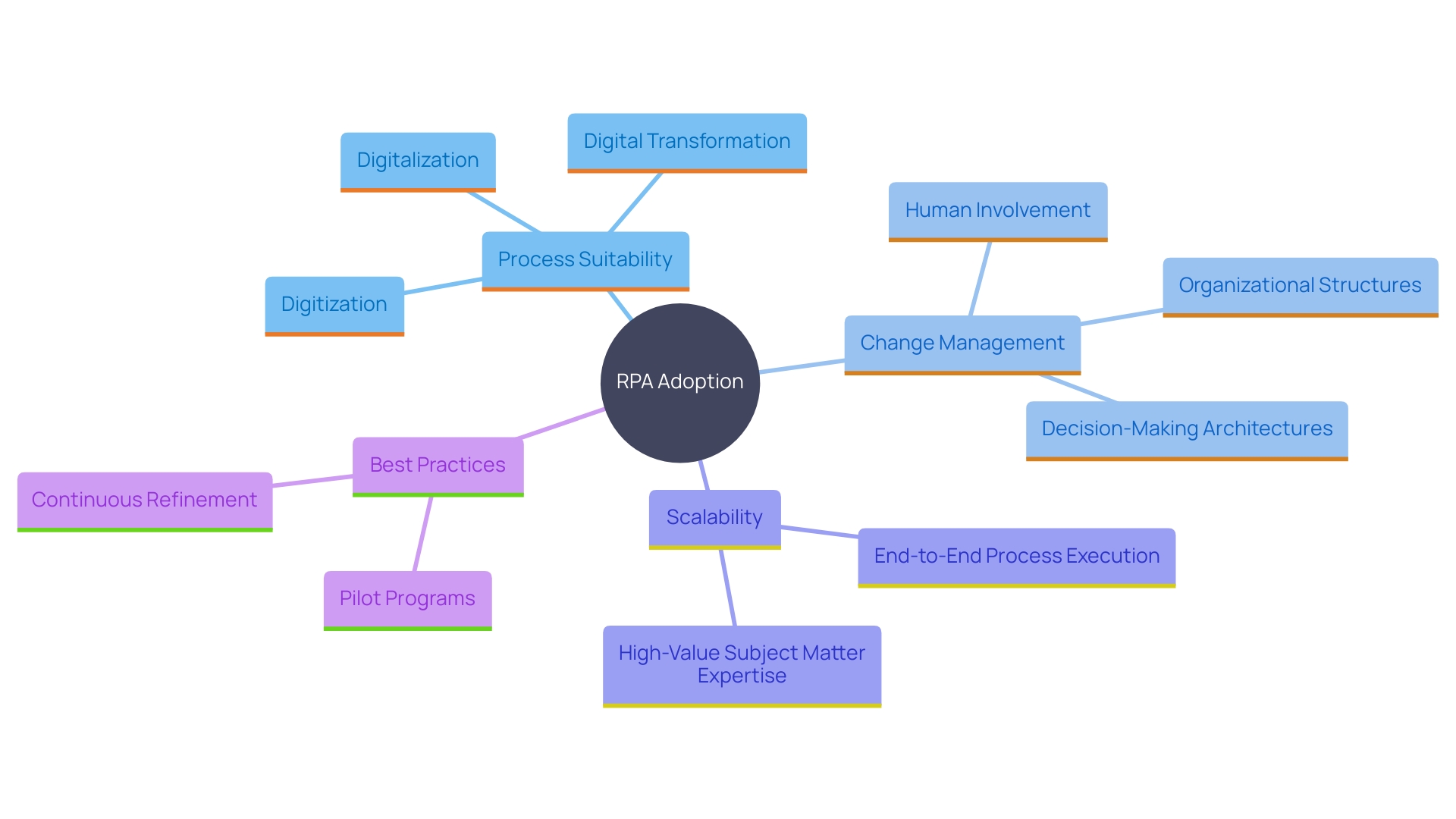Introduction
Robotic Process Automation (RPA) is revolutionizing the way businesses operate by leveraging advanced software to automate repetitive and rule-based tasks. This technology replicates human interactions with digital systems, allowing for remarkable efficiency and accuracy in executing business processes. From streamlining operations to minimizing manual errors, RPA is proving indispensable across various industries.
For instance, Louvre Hotels Group’s partnership with RobosizeME saved hundreds of hours each month on rate code maintenance, highlighting RPA’s potential to optimize workflows and enhance productivity.
In an era where digital transformation is key, the proliferation of industrial robots and service automation tools underscores the critical role of RPA. Organizations that embrace this technology can not only reduce operational costs but also improve compliance, employee satisfaction, and customer experiences. By understanding and implementing RPA, businesses can navigate the complexities of the digital landscape, making significant strides towards innovation and operational excellence.
What is Robotic Process Automation?
Robotic Process Automation (RPA) leverages advanced software technology to automate repetitive and rule-based tasks traditionally handled by humans. By deploying software robots, or ‘bots’, RPA replicates human interactions with digital systems to execute business processes with impressive effectiveness. This cutting-edge technology is pivotal in streamlining operations, minimizing manual errors, and boosting productivity across various industries.
For instance, the Louvre Hotels Group partnered with RobosizeME to implement RPA for rate code maintenance, resulting in saving 188 hours per month on rate code headers and 386 hours per month on rate code details. This demonstrates the vast capability of RPA in enhancing work processes and achieving significant productivity improvements.
RPA is not just a fleeting trend but a transformative force in today’s digital landscape. According to the International Federation of Robotics, there are approximately 3.5 million industrial robots deployed worldwide, with a total value of 15.7 billion US dollars. This increase is especially significant in the automotive and electronics industries, highlighting the essential function of mechanization in contemporary manufacturing.
Moreover, RPA’s impact extends beyond manufacturing. The growth of chatbots, virtual assistants, and IoT devices in the service sector emphasizes how automation improves customer interactions and effectiveness. As a comprehensive strategy for digital transformation, RPA allows organizations to innovate, enhance productivity, and improve customer experiences.
By understanding and leveraging RPA, organizations can navigate the digital landscape more effectively and position themselves for success in this era of rapid technological advancement.

Key Benefits of Robotic Process Automation
Robotic Process Automation (RPA) provides numerous benefits to organizations seeking to improve their workflows and boost operational performance. By automating mundane tasks, businesses can achieve significant cost savings, improved accuracy in data processing, and enhanced compliance with regulatory standards. For instance, Louvre Hotels Group saved 574 hours per month on rate code maintenance by implementing RPA solutions from RobosizeME. This type of productivity improvement illustrates the vast possibilities of mechanization in different industries.
The benefits of RPA extend to employee satisfaction as well. When routine tasks are automated, employees can focus on more strategic initiatives, which not only boosts morale but also fosters innovation within teams. As noted in a study on AI-tooling in the engineering workspace, workers using technological tools often seek more meaningful connections and show positive behaviors such as helping coworkers, indicating an overall improvement in workplace dynamics.
In industries like optometry, where Specsavers operates with complex supply chains and legacy systems, RPA can streamline processes and overcome challenges related to data transfer between older machines and modern systems. This enhances efficiency and allows the company to concentrate on improving customer experiences, such as identifying potential health issues at an early stage.
Furthermore, automation in sectors like winemaking, as seen with St. James Winery, shows how RPA can support consistency and quality in production, leading to significant achievements and recognition. Overall, RPA not only enhances performance metrics but also contributes to a more engaged and productive workforce.
Applications of Robotic Process Automation
Robotic Process Automation (RPA) transcends industry boundaries, offering transformative benefits across sectors such as finance, healthcare, manufacturing, and customer service. In the finance sector, for instance, M&T Bank has harnessed the power of RPA to streamline complex processes like invoice processing and reconciliation, enhancing operational efficiency while maintaining stringent regulatory compliance. This corresponds with the wider trend in finance, where the uptake of AI and mechanization tools is becoming more crucial to address evolving consumer behaviors and competitive challenges.
In healthcare, RPA has revolutionized patient data management and appointment scheduling, significantly reducing administrative burdens. The manufacturing industry leverages RPA to automate supply chain operations, enhancing productivity and reducing manual errors. For instance, the Service Robotics market demonstrates the extensive use of robots in logistics and medical service robotics, illustrating the sector’s high adoption rate of technologies that enhance efficiency.
Customer service also benefits tremendously from RPA, with bots managing inquiries and processing orders, leading to faster response times and improved customer satisfaction. This versatility is underscored by the fact that service robots are designed to assist humans in carrying out tasks across various professional and personal use cases, as evidenced by their significant presence in commercial and consumer markets globally.
The extensive use of RPA in these various sectors highlights its significance as a powerful instrument for improving operational performance and productivity, regardless of the industry.

Implementing RPA: Considerations and Best Practices
When adopting Robotic Process Automation (RPA), it’s vital for organizations to consider factors such as process suitability, change management, and scalability. Recognizing procedures that are extremely repetitive and governed by rules is essential for efficient mechanization. For instance, the Surrey County Council, which offers services to 1.2 million individuals, has successfully adopted RPA to manage routine tasks, thus enhancing productivity and allowing human resources to focus on more complex activities.
Furthermore, fostering a culture of collaboration and openness to change among employees is crucial. As the technological landscape evolves, it’s clear that human partnership remains essential. According to the CTO and Co-Founder of Reveille Software, “Automation has aimed to improve efficiency, productivity, and convenience, but it still takes a human partnership to ensure stability.”
Best practices for RPA implementation include starting with pilot programs, measuring outcomes meticulously, and continuously refining processes. This approach aligns with the broader trends in automation, where ongoing monitoring and management are necessary to maintain stability and effectiveness. Additionally, organizations can benefit from the collaborative efforts seen in communities like the AI Center of Excellence, where shared insights and best practices are regularly exchanged. By leveraging these strategies, companies can maximize the benefits of RPA and drive significant improvements in operational efficiency.

Conclusion
Robotic Process Automation (RPA) stands as a transformative force in the modern business landscape, offering organizations the ability to streamline operations, enhance productivity, and reduce costs. The technology’s capacity to automate repetitive tasks not only minimizes manual errors but also allows employees to focus on more strategic initiatives, fostering a culture of innovation and engagement within teams. Real-world examples, such as the Louvre Hotels Group’s substantial time savings, highlight the tangible benefits RPA can deliver across various sectors.
The versatility of RPA extends beyond mere efficiency gains; it enhances compliance, improves customer experiences, and supports organizational agility. Industries ranging from finance to healthcare are reaping the rewards of RPA implementation, demonstrating its potential to revolutionize processes and meet evolving market demands. By embracing automation, organizations can navigate the complexities of the digital landscape, positioning themselves for sustained success.
For effective RPA implementation, careful consideration of process suitability and a commitment to change management are essential. Organizations that adopt pilot programs, measure outcomes, and foster collaboration will not only maximize the benefits of RPA but also ensure a smooth transition into a more automated future. By harnessing the power of RPA, businesses are empowered to achieve operational excellence and drive innovation in an increasingly competitive environment.
Discover how our tailored RPA solutions can transform your business operations today!

